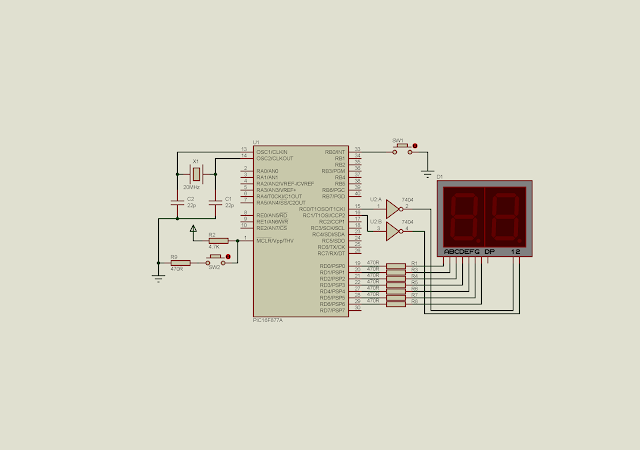I have showed an example of Timer 0 interrupt programming of PIC16F877A in an earlier post. Here I use timer 0 interrupt to drive a multiplexing seven-segments display. This method is very effective in any application that contain many tasks polling.
In this example, timer 0 overflow interrupt will create a timer tick around 2.56 milliseconds. This timer tick regularly activate each digits of the multiplexing seven-segment display.
 |
| Sample program |
In main program loop, the program just check whenever the button is press. It will need to wait until the button is released until it increase the press counter.
The display shows the counting content up to 60 before it reset to 0. The display show the counting content with any flickering due to the long-time button pressing.
Source Code:
Configuration bits:
Schematic:
 |
| Using Timer0 Overflow Interrupt of PIC16F877A to Drive Multiplexing Display |
Click here to download source file.
No comments:
Post a Comment